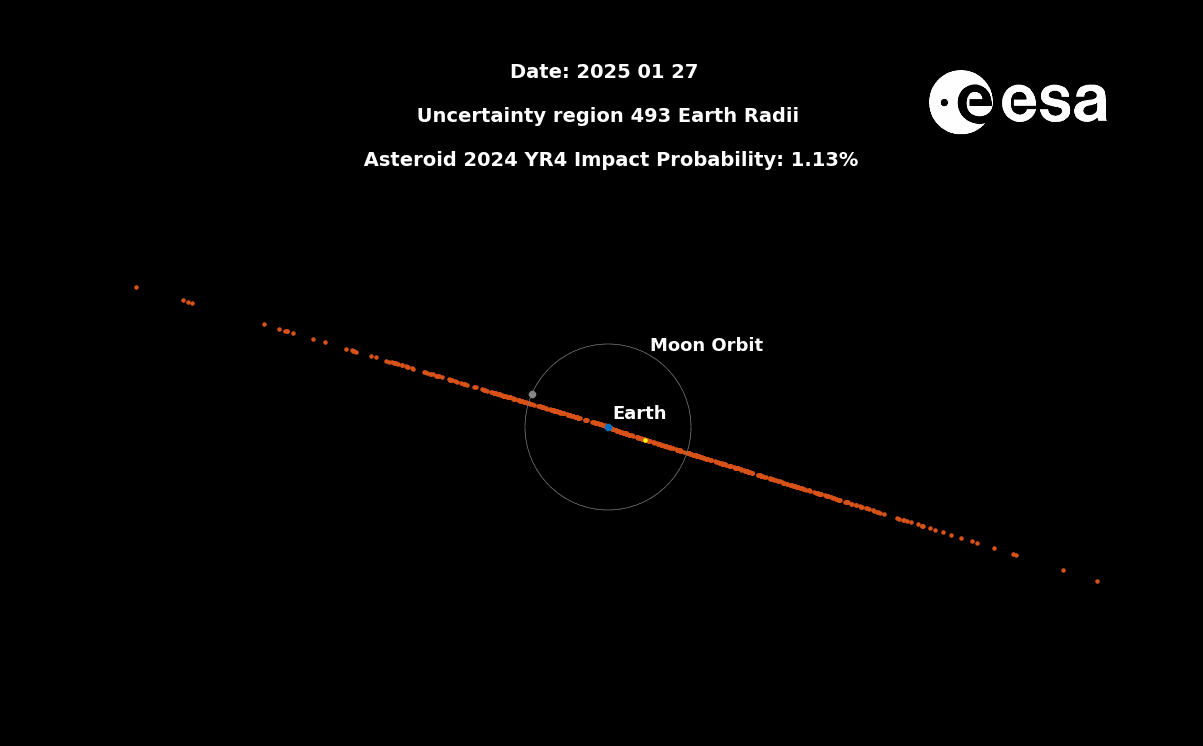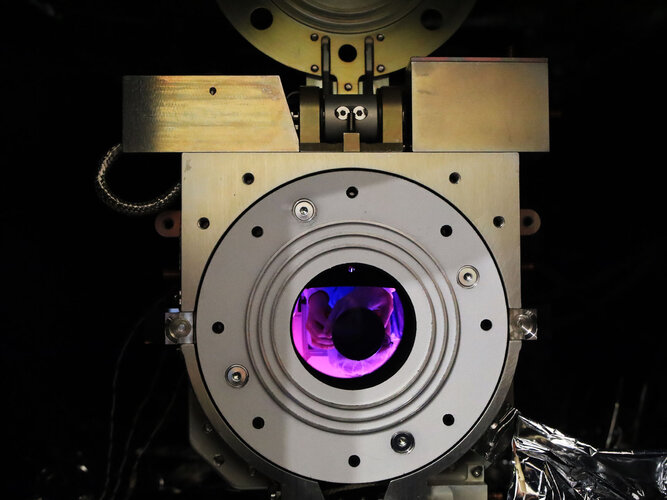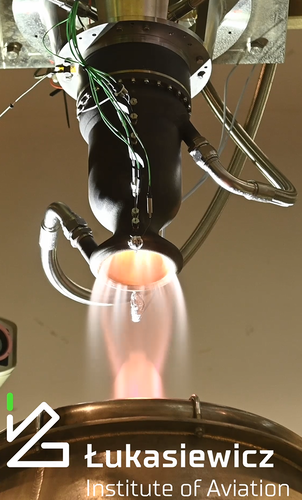BlackSky Secures Strategic International Contract for Subscription-Based Gen-2 Imagery Services
Tuesday, 25 February 2025 09:06 BlackSky Technology Inc. (NYSE: BKSY) has secured a six-figure contract with a new strategic international client to provide subscription-based on-demand Gen-2 imagery and analytics services. As part of the agreement, BlackSky will also deliver comprehensive analyst training on its AI-driven BlackSky Spectra multi-intelligence tasking and analytics platform. The training will focus on the applic
BlackSky Technology Inc. (NYSE: BKSY) has secured a six-figure contract with a new strategic international client to provide subscription-based on-demand Gen-2 imagery and analytics services. As part of the agreement, BlackSky will also deliver comprehensive analyst training on its AI-driven BlackSky Spectra multi-intelligence tasking and analytics platform. The training will focus on the applic Eyeing China and US, EU hopes clean tech boost will spark growth
Tuesday, 25 February 2025 09:06 How do you solve Europe's lagging economic growth and reverse its industrial decline? That is the challenge the EU faces as the bloc comes under fierce pressure from US President Donald Trump's tariffs and a rising China.
Europe's answer to bring its economy back to life is a battery of measures to be announced next week including boosting its clean tech sector and supporting energy-intensiv
How do you solve Europe's lagging economic growth and reverse its industrial decline? That is the challenge the EU faces as the bloc comes under fierce pressure from US President Donald Trump's tariffs and a rising China.
Europe's answer to bring its economy back to life is a battery of measures to be announced next week including boosting its clean tech sector and supporting energy-intensiv Pierogi Make Their Debut Aboard the International Space Station
Tuesday, 25 February 2025 09:06 ESA project astronaut Slawosz Uznanski-Wisniewski is bringing a unique culinary touch to the International Space Station (ISS) as part of the upcoming Axiom Mission 4. For the first time, traditional Polish dumplings, known as pierogi, will be part of the menu in orbit.
Slawosz collaborated with a well-known chef and a Polish family-owned company to create a menu that captures the essence
ESA project astronaut Slawosz Uznanski-Wisniewski is bringing a unique culinary touch to the International Space Station (ISS) as part of the upcoming Axiom Mission 4. For the first time, traditional Polish dumplings, known as pierogi, will be part of the menu in orbit.
Slawosz collaborated with a well-known chef and a Polish family-owned company to create a menu that captures the essence Blue Moon mission drives NanoAvionics SuperSharp thermal imaging innovation
Tuesday, 25 February 2025 09:06 Based in the UK and a member of the Satlantis group, SuperSharp has chosen the Kongsberg NanoAvionics MP42 microsatellite platform for its pioneering Blue Moon mission. This unique Thermal InfraRed project will carry the company's flagship HIBISCUS instrument weighing 80kg and is scheduled to launch in the second half of 2026 aboard SpaceX Transporter rideshare.
Blue Moon is set to redefin
Based in the UK and a member of the Satlantis group, SuperSharp has chosen the Kongsberg NanoAvionics MP42 microsatellite platform for its pioneering Blue Moon mission. This unique Thermal InfraRed project will carry the company's flagship HIBISCUS instrument weighing 80kg and is scheduled to launch in the second half of 2026 aboard SpaceX Transporter rideshare.
Blue Moon is set to redefin INFLECION project to revolutionize maritime security
Tuesday, 25 February 2025 09:06 The European Space Agency (ESA) has partnered with AAC Clyde Space to launch the first phase of INFLECION, a satellite constellation project aimed at transforming Maritime Domain Awareness. This initiative will bolster safety, operational efficiency, regulatory compliance, and environmental sustainability across the maritime sector.
Given that nearly 90% of global trade moves via maritime
The European Space Agency (ESA) has partnered with AAC Clyde Space to launch the first phase of INFLECION, a satellite constellation project aimed at transforming Maritime Domain Awareness. This initiative will bolster safety, operational efficiency, regulatory compliance, and environmental sustainability across the maritime sector.
Given that nearly 90% of global trade moves via maritime ESA Red Cross alliance advances crisis response
Tuesday, 25 February 2025 09:06 The European Space Agency (ESA) in collaboration with the International Committee of the Red Cross (ICRC) has signed a Memorandum of Intent to leverage space technology for global humanitarian aid. The alliance merges ESA's space expertise with ICRC's humanitarian reach to develop innovative solutions that support communities impacted by disasters and conflicts in Europe and beyond.
In cri
The European Space Agency (ESA) in collaboration with the International Committee of the Red Cross (ICRC) has signed a Memorandum of Intent to leverage space technology for global humanitarian aid. The alliance merges ESA's space expertise with ICRC's humanitarian reach to develop innovative solutions that support communities impacted by disasters and conflicts in Europe and beyond.
In cri SLAC to advance fusion target technology through DOE FIRE Collaboratives
Tuesday, 25 February 2025 09:06 Researchers at the Department of Energy's SLAC National Accelerator Laboratory will play a key role in the newly launched Fusion Innovative Research Engine (FIRE) Collaboratives, a DOE initiative designed to connect foundational scientific research with the growing needs of the fusion energy sector. As part of this effort, the DOE has committed $107 million in funding to support six specialized
Researchers at the Department of Energy's SLAC National Accelerator Laboratory will play a key role in the newly launched Fusion Innovative Research Engine (FIRE) Collaboratives, a DOE initiative designed to connect foundational scientific research with the growing needs of the fusion energy sector. As part of this effort, the DOE has committed $107 million in funding to support six specialized Unlocking the secrets of fusion's core with AI-enhanced simulations
Tuesday, 25 February 2025 09:06 Creating and sustaining fusion reactions - essentially recreating star-like conditions on Earth - is extremely difficult, and Nathan Howard PhD '12, a principal research scientist at the MIT Plasma Science and Fusion Center (PSFC), thinks it's one of the most fascinating scientific challenges of our time. "Both the science and the overall promise of fusion as a clean energy source are really int
Creating and sustaining fusion reactions - essentially recreating star-like conditions on Earth - is extremely difficult, and Nathan Howard PhD '12, a principal research scientist at the MIT Plasma Science and Fusion Center (PSFC), thinks it's one of the most fascinating scientific challenges of our time. "Both the science and the overall promise of fusion as a clean energy source are really int Illuminating the Inner Workings of the Proton
Tuesday, 25 February 2025 09:06 A team of scientists has successfully mapped the intricate forces at play inside a proton, revealing with unprecedented precision how quarks-its fundamental components-react when exposed to high-energy photons.
The international collaboration, which includes researchers from the University of Adelaide, is focused on uncovering the structural complexity of subatomic particles to gain deeper
A team of scientists has successfully mapped the intricate forces at play inside a proton, revealing with unprecedented precision how quarks-its fundamental components-react when exposed to high-energy photons.
The international collaboration, which includes researchers from the University of Adelaide, is focused on uncovering the structural complexity of subatomic particles to gain deeper Have we been wrong about why Mars is red?
Tuesday, 25 February 2025 09:00
The Red Planet’s iconic rusty dust has a much wetter history than previously assumed, find scientists combining European Space Agency (ESA) and NASA spacecraft data with new laboratory experiments on replica Mars dust. The results suggest that Mars rusted early in the planet’s ancient past, when liquid water was more widespread.
Asteroid 2024 YR4 no longer poses significant impact risk
Tuesday, 25 February 2025 08:00
The latest analysis from the European Space Agency (ESA) Planetary Defence Office has reduced the probability that asteroid 2024 YR4 might impact Earth in 2032 to 0.001%.
Proba-3 stargazing to warm up for corona observations
Monday, 24 February 2025 11:50
The European Space Agency’s Proba-3 mission will create artificial solar eclipses in orbit, allowing scientists to study the Sun’s corona for longer periods of time than would be possible during eclipses observed from Earth. To test the functionality of Proba-3’s systems, researchers from the Royal Observatory of Belgium took a snapshot of a star field – in the very first image captured by the mission’s coronagraph.
Vary that thrust: longer hot-fire of rocket engine demonstrator
Monday, 24 February 2025 11:47
Blue Ghost Mission Nears Moon Touchdown and GNSS Milestone
Monday, 24 February 2025 08:31
 Firefly's Blue Ghost Mission 1 is set to land on the Moon in less than a week with touchdown expected on Sunday March 2 after its launch on Jan 15. In preparation for descent, the spacecraft will execute its final lunar orbit maneuver on Monday, Feb 24, inserting it into a near-circular low orbit that brings it closer to the lunar surface. Approximately one hour before landing, a Descent Orbit
Firefly's Blue Ghost Mission 1 is set to land on the Moon in less than a week with touchdown expected on Sunday March 2 after its launch on Jan 15. In preparation for descent, the spacecraft will execute its final lunar orbit maneuver on Monday, Feb 24, inserting it into a near-circular low orbit that brings it closer to the lunar surface. Approximately one hour before landing, a Descent Orbit
Oort cloud resembles a galaxy, new study finds
Monday, 24 February 2025 08:31 A shell of icy objects at the edge of the solar system known as the Oort cloud has a pair of spiral arms that resemble a miniature galaxy, new research suggests.
Until now, the shape of the cloud and how it is affected by forces beyond our solar system have not been largely understood. But the new research, published Feb. 16 at arXiv, says the cloud may look like a spiral disk, one of t
A shell of icy objects at the edge of the solar system known as the Oort cloud has a pair of spiral arms that resemble a miniature galaxy, new research suggests.
Until now, the shape of the cloud and how it is affected by forces beyond our solar system have not been largely understood. But the new research, published Feb. 16 at arXiv, says the cloud may look like a spiral disk, one of t 
